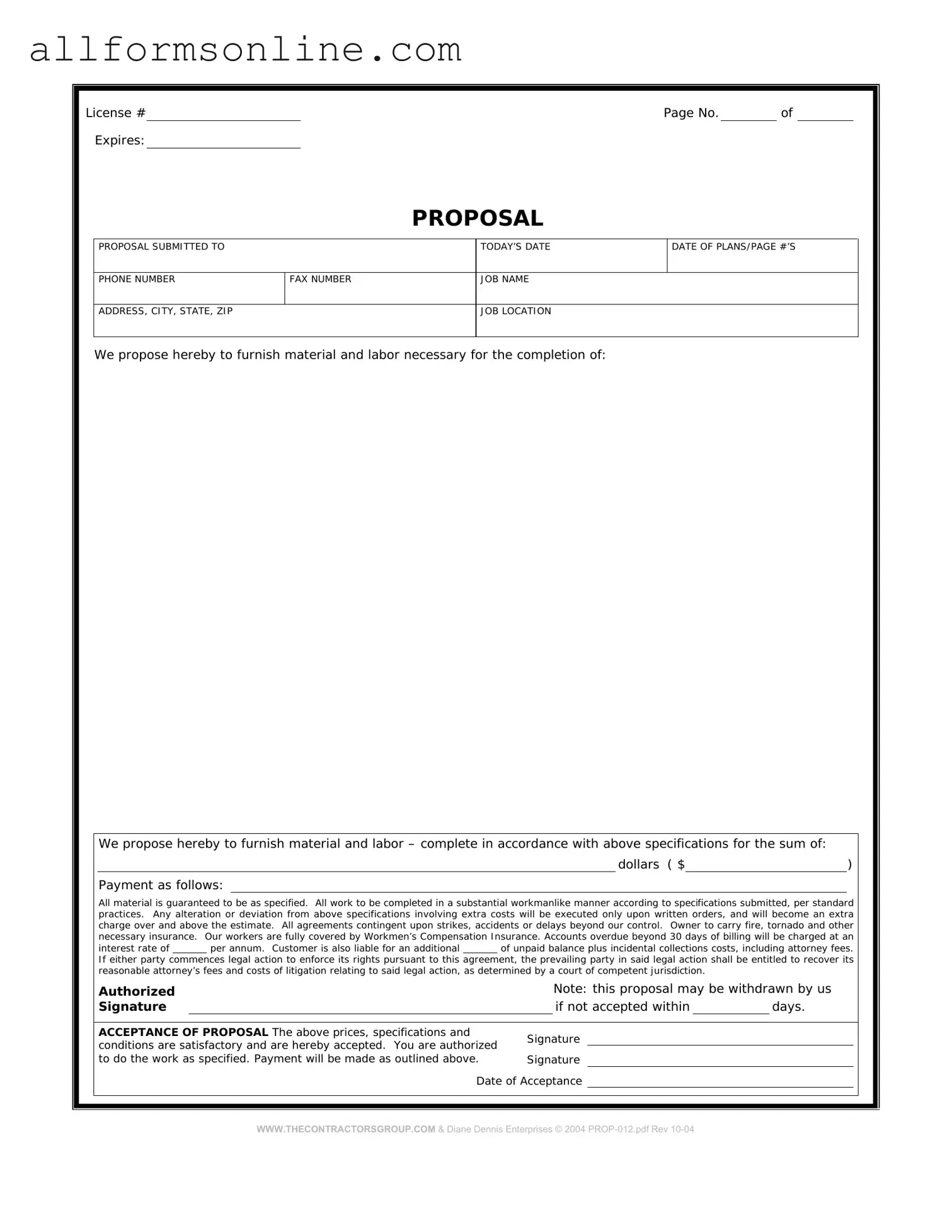What is a construction proposal form?
A construction proposal form is a document that outlines the details of a construction project. It includes information such as project scope, timelines, costs, and terms of service. This form helps both contractors and clients understand the expectations and requirements before starting the work.
Why is it important to use a construction proposal form?
Using a construction proposal form is crucial for clarity and organization. It helps prevent misunderstandings between the contractor and the client. By clearly stating the project details, both parties can agree on the scope and budget, which minimizes disputes later on.
What should be included in a construction proposal form?
A complete construction proposal form should include the project description, estimated costs, timelines, payment terms, and any special conditions. It may also outline the materials to be used and the qualifications of the contractor. Including all this information ensures everyone is on the same page.
How do I fill out a construction proposal form?
To fill out a construction proposal form, start by gathering all relevant project details. Clearly describe the work to be done, list the materials needed, and provide a timeline for completion. Be sure to include pricing and payment schedules. If you're unsure about any section, it’s a good idea to consult with a professional.
Can I modify a construction proposal form?
Yes, you can modify a construction proposal form to fit your specific needs. Just ensure that any changes are clear and agreed upon by both parties. Modifications should be documented properly to maintain transparency and avoid confusion later on.
